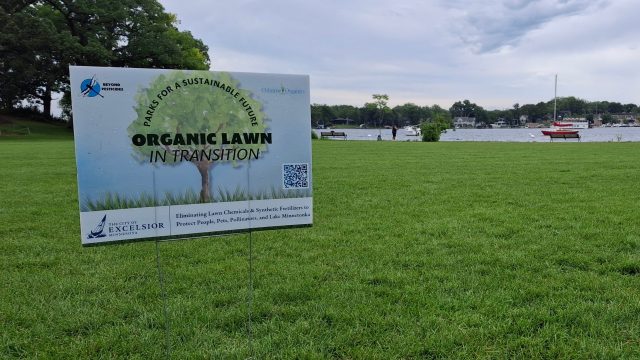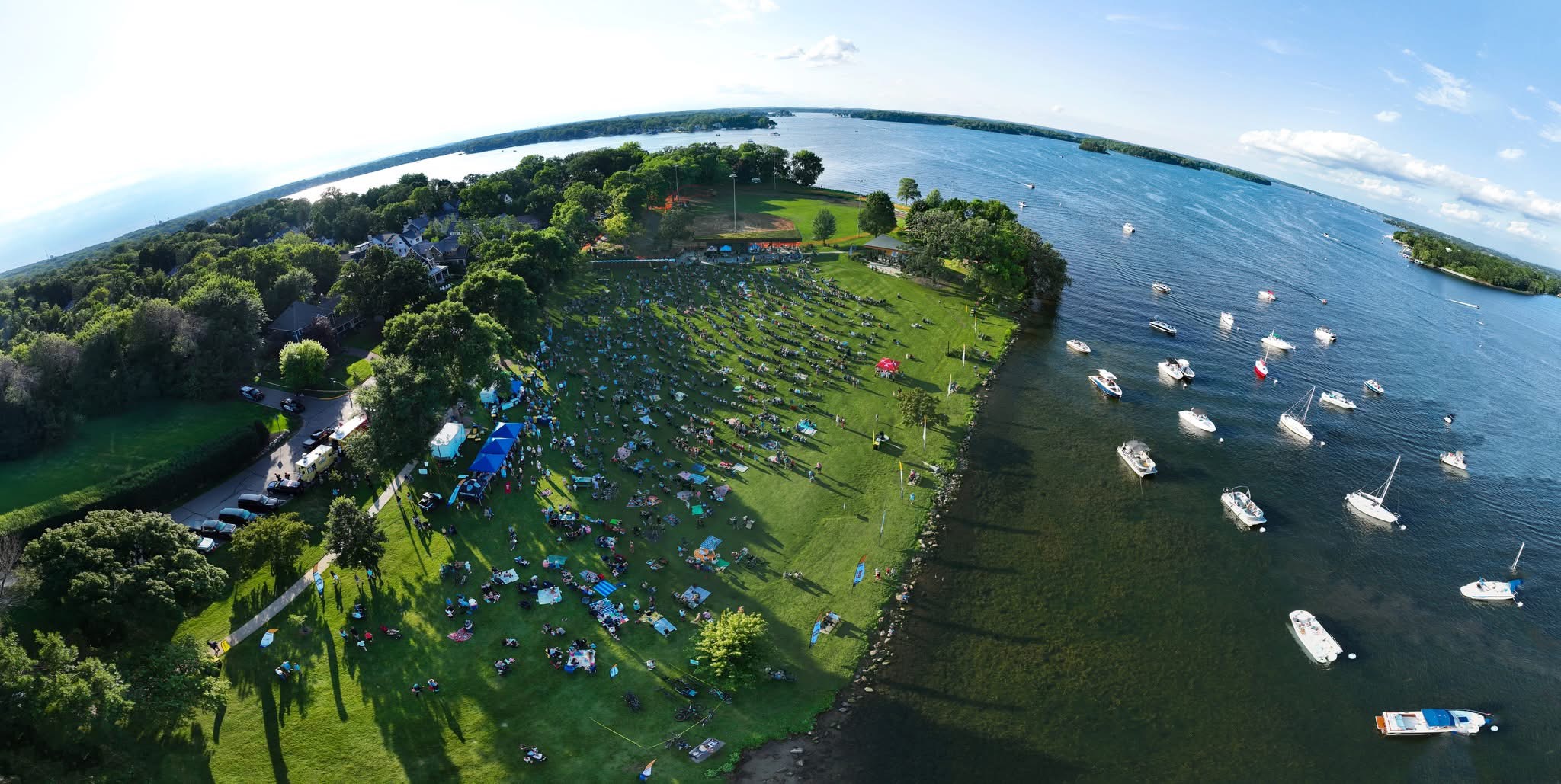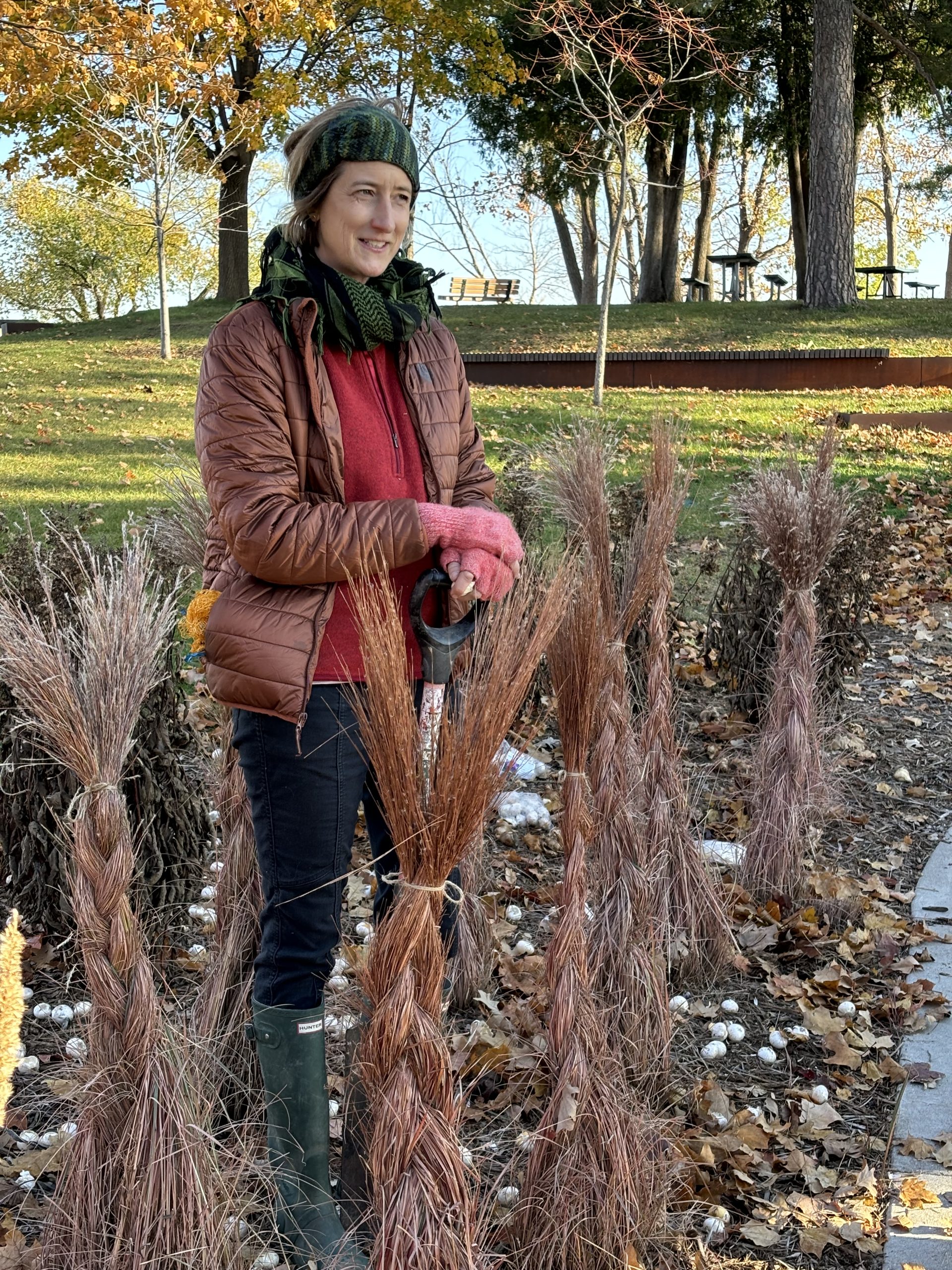20
Aug
City Launches Transition to Organic Parks To Protect Community Health and the Environment

(Beyond Pesticides, August 20, 2025) As a part of a nationwide push to stop the use of petrochemical pesticides and fertilizers, Beyond Pesticides, in partnership with the City of Excelsior, Minnesota, and Osborne Organics, announced the transition of city park land sites to organic land management. Under its program, Parks for a Sustainable Future, Beyond Pesticides underwrites the development of organic transition plans and staff training on holistic practices. The goal of the program is to advance practical, resilient, cost-effective management techniques that confront urgent threats to public health, biodiversity, and climate that are exacerbated by toxic pesticide and fertilizer use. See the link to our press release here.
Excelsior City Councilmember Jennifer Caron said, “Excelsior has embarked on an exciting first step in organically managing our public parks and minimizing runoff into the lake.” Ms. Caron added: “By participating in the Parks for a Sustainable Future grant program with Beyond Pesticides, the city is learning how to eliminate herbicides, insecticides, and other pesticides on sites in the Commons, including the Ballfield and Great Lawn. The result will be a healthier Commons, particularly in areas heavily used by people, pets, and pollinators alike.”
Kevin Quinn, parks and natural resources manager for Excelsior, said: “Working with Beyond Pesticides to help improve the health of our park system reminds me of the popular quote: ‘Treat the Earth as if your life depends on it—because it does.’ Organic lawn care is a new adventure for the City of Excelsior, and we are very fortunate for the opportunity to make this transition with such a dedicated and knowledgeable team of professionals, city residents, and volunteers.”
The program received an initial push from community member, advocate, and horticulturist Colleen Lockovitch. Ms. Lockovitch started the Uncommon Gardeners volunteer group to maintain and care for public pollinator gardens planted by the City over the past four years.
The program: Beyond Pesticides, through its program, has collaborated with dozens of communities across the country to transition parks, playing fields, and public spaces to organic land management by providing in-depth training to assist community land managers in transitioning three public demonstration sites and the knowledge necessary to eventually transition all public areas in a locality to these safer practices.
The City: The City of Excelsior—located on Lake Minnetonka with a population of 2,335—is a popular regional recreational destination 15 miles southwest of downtown Minneapolis, attracting tens of thousands of visitors annually. All three demonstration sites for the program are immediately adjacent to Lake Minnetonka in the historic Excelsior Commons [135 Lake Street in Excelsior, MN]. The 13-acre park, whose origins date to the founding of the City, hosts open recreational areas, picnic sites, playgrounds, two swimming beaches, tennis courts, baseball fields, a band shell, a bathhouse, public restrooms, and docking for public lake access.
The sites in the program:
- The Great Lawn: Recently resodded as part of the Pavilion and Plaza projects, this 113,400 square-foot site serves as a high-visibility centerpiece. Every summer, the Great Lawn hosts a popular concert series every other week—drawing between 2,000 and 7,000 attendees—as well as an annual 4th of July celebration. Designated for daily recreation, the Great Lawn is where residents and visitors can walk their dogs, play frisbee, gather at the picnic tables, and sit on benches or blankets to celebrate the Bay with friends and family.
- Commons Ballfield: This high-traffic ballfield, slated to be regraded and resodded as part of the Ballfield redesign project, is a historic feature of the Commons. At approximately 55,555 square feet, the WPA-era ballfield seating from the 1930s provides an incredible view of the lake. Beyond Pesticides, in partnership with the City and technical consultant Osborne Organics, will guide the ongoing installation and organic land management of the natural turf field, used daily during the summer months by men’s and women’s baseball and softball leagues.
- The Shoreline: The Shoreline, a passive-use area of the Commons measuring approximately 14,000 square feet, is used for yoga and community classes. It is lined with benches that provide a place for people to fish, sit, and enjoy an expanded view of Lake Minnetonka, far beyond Excelsior Bay. As no synthetic fertilizers or pesticides are currently in use, given the site’s proximity to the lakeshore, the Parks for a Sustainable Future program will focus on upscaling the condition of the grass through organic land management.
“We are excited to be working with the City of Excelsior on organic land management practices that protect community health and the environment, including bees, butterflies, and birds, and support efforts to mitigate climate change and biodiversity decline,” said Jay Feldman, executive director of Beyond Pesticides.
In the words of Ms. Lockovitch, transitioning away from the use of harmful chemicals, like petrochemical pesticides and fertilizers, is vital to cultivating habitats for wildlife. “In every public garden I have managed, we never used synthetic fertilizers or any type of pesticide,” said Lockovitch. “Prioritizing the growth of diverse and chemical-free gardens benefits everyone. I am so proud of the City of Excelsior for its commitment to transition away from using synthetic fertilizers and pesticides. We owe it to the lake, the ecosystems, and the entire community to take care of it the right and healthy way. Healthy lawns and gardens start out with healthy soils.”
“Excelsior has embarked on an exciting first step in organically managing our public parks and minimizing runoff into the lake,” Ms. Caron adds. “By participating in the Parks for a Sustainable Future grant program with Beyond Pesticides, the city is learning how to eliminate herbicides, insecticides, and other pesticides on sites in the Commons, including the Ballfield and Great Lawn. The result will be a healthier Commons, particularly in areas heavily used by people, pets, and pollinators alike.”
The Parks for a Sustainable Future program launched in time to organically welcome thousands of guests to the historic Excelsior Commons for the popular summer series “Concerts in the Commons,” hosted next on August 20 and August 27 at 6:30 PM CT, and “Cinema in The Commons,” featuring a family-friendly movie on August 22 and September 5 at 8 PM CT.
Does your community have a pesticide-free park managed with organic practices? Do you wish it did? The time to take action to protect those parks and create new ones is now! 📣 Click here to take the first step and become a Parks Advocate!
ℹ️ For more information on the program launch, and to learn more about how YOU can bring the Parks for a Sustainable Future Program to a community near you, please contact Rika Gopinath, Community Policy and Action Manager at [email protected]!
Envision an organic community where local parks, playing fields, and greenways are managed without unnecessary toxic pesticides, children and pets are safe to run around on the grass, and bees and other pollinators are safeguarded from toxic chemicals.
At Beyond Pesticides, this is the future we envision and are working to achieve.
Updated—Parks Flyer 3.24.25 by Beyond Pesticides
All unattributed positions and opinions in this piece are those of Beyond Pesticides.












